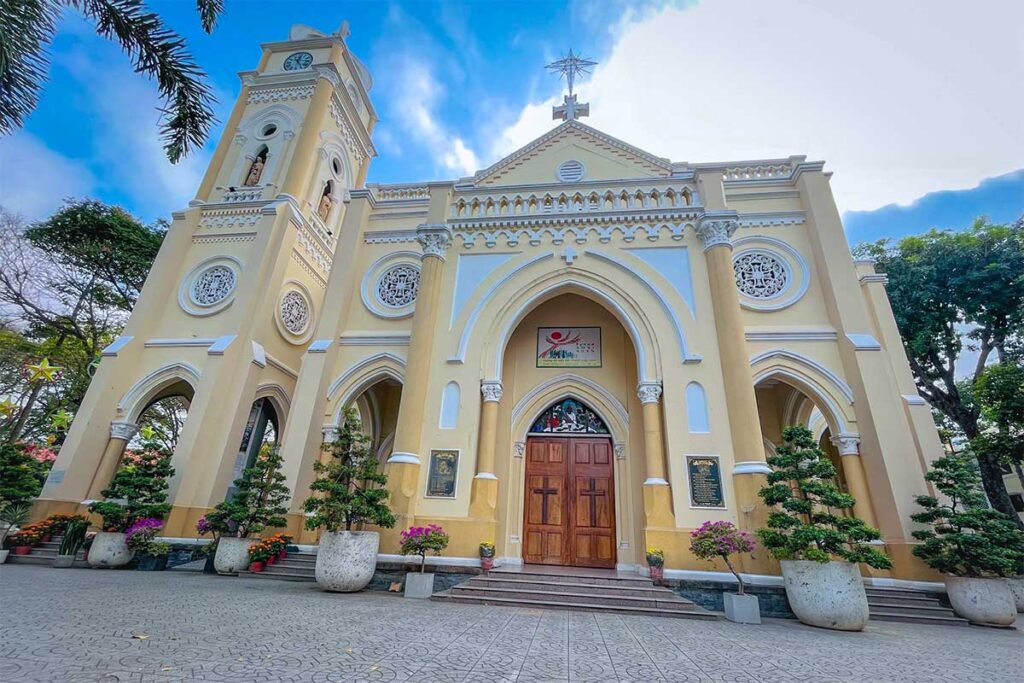What is My Tho Cathedral?
Location & Setting
My Tho Cathedral is located right in the center of My Tho, on Hung Vuong Boulevard. It sits along one of the city’s busiest streets, so the immediate surroundings are more urban than scenic. The advantage is that it’s easy to stop by if you’re exploring the city’s other sights such as Vinh Trang Pagoda or My Tho Market. You won’t need extra travel time—this is more of a quick detour than a destination in itself.
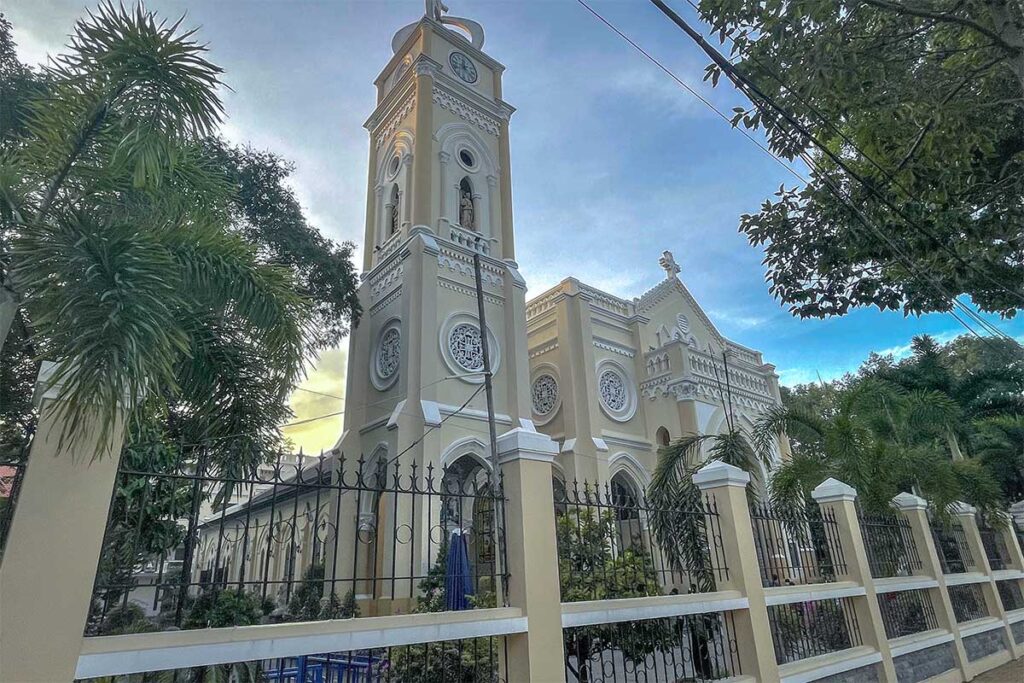
History
The cathedral was officially built between 1906 and 1910, replacing earlier churches that no longer served the growing Catholic community. The very first church in the area was dedicated to St. Francis Xavier, followed by Vinh Tuong Church in 1866. By the early 20th century, a larger and more durable building was needed, which led to the construction of today’s cathedral in a Greco-Roman style.
When the Diocese of My Tho was created in 1960, the church was given its official title: the Cathedral of the Immaculate Conception. Over the years it has gone through several rounds of maintenance, including a major restoration in 2007 that renewed the roof, repaired the bell tower, and added a Station of the Cross in the church grounds.
Role today
Today, My Tho Cathedral is the seat of the Diocese of My Tho, which covers much of Tien Giang and surrounding provinces. It remains an active place of worship with daily and weekly masses, and it becomes a gathering point for larger Catholic events such as feast days and annual pilgrimages. For locals, it is first and foremost a functioning parish church rather than a tourist attraction, so visitors should expect a lived-in, active space rather than a polished heritage site.
Highlights of visiting My Tho Cathedral
1. Architecture & Exterior
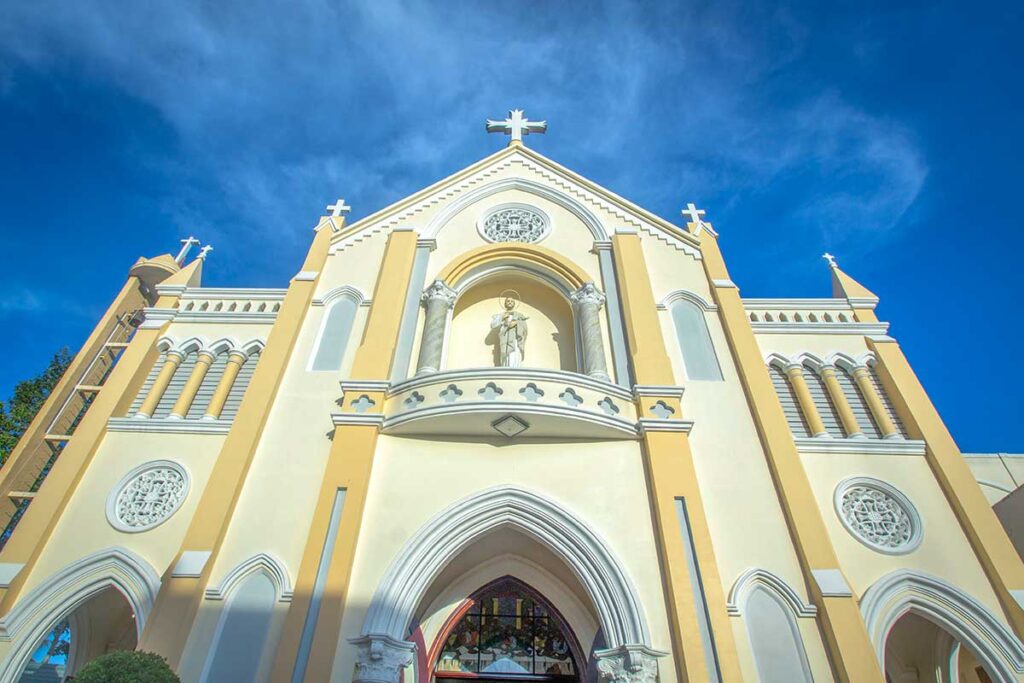
The cathedral was built in a Greco-Roman Renaissance style, which was popular among Catholic churches in Vietnam during the early 20th century. From the outside you’ll notice round columns, arched windows, and a detailed façade that looks elegant without being overly ornate.
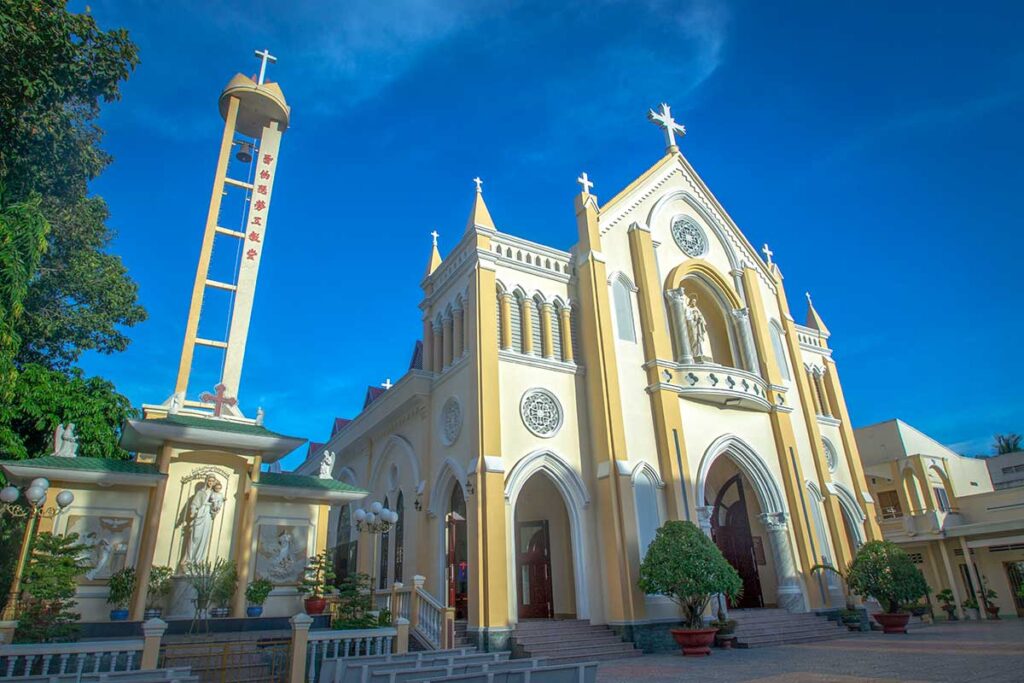
The bell tower is a central feature, though not as tall or striking as those in larger cities. Because the church was built on swampy ground, its overall height is modest compared to other cathedrals—you won’t find a towering landmark here, but rather a solid and functional design that has lasted more than a century.
2. Interior Features
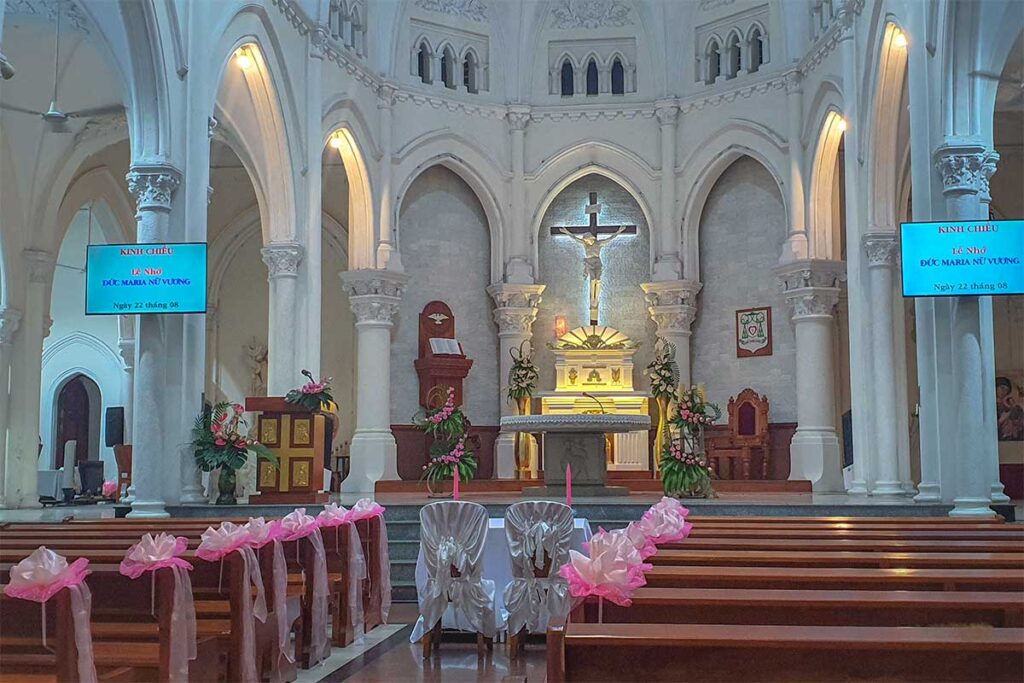
Inside, the cathedral feels brighter and more open than its exterior might suggest. The white-painted walls and tiled floors give it a clean, spacious atmosphere.
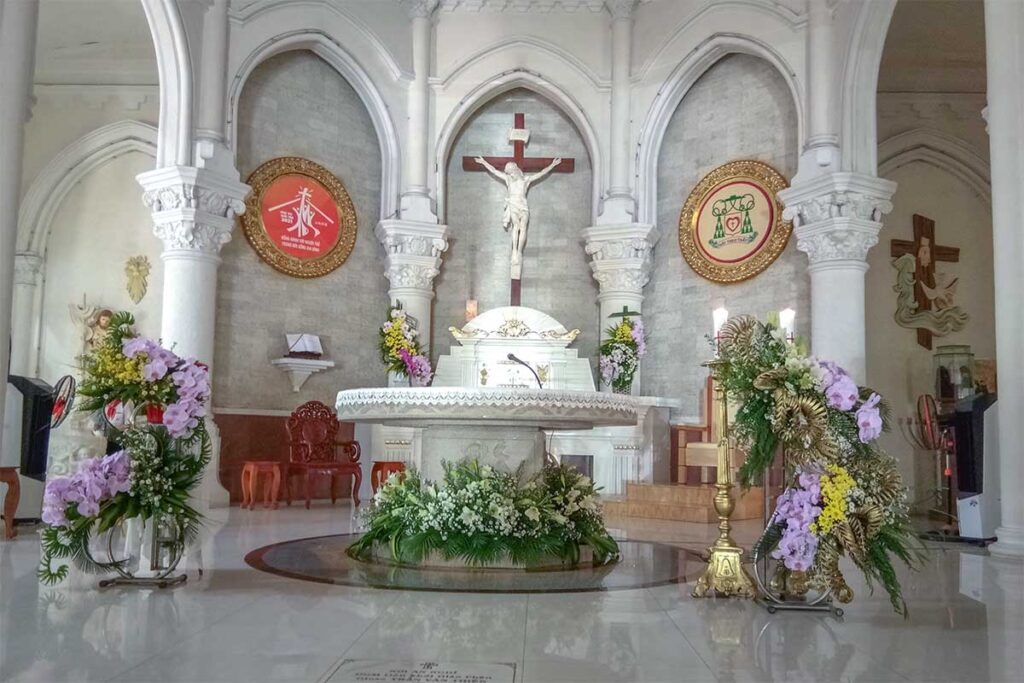
European-style chandeliers add a touch of elegance, while the sanctuary stands out with its mix of yellow, white, and red tones. The design is relatively simple compared to grander cathedrals you might see in Saigon or Europe, but it still carries a quiet charm.
3. Atmosphere
Despite being on one of My Tho’s busiest streets, the cathedral itself feels peaceful once you step inside. On weekdays it can be quiet, with just a handful of locals stopping by to pray. During mass times it fills with parishioners, giving you a sense of the church’s role in local community life. For visitors, the atmosphere strikes a balance between being a living place of worship and a cultural landmark—interesting to step into, but not necessarily a major tourist attraction.
Practical visiting information & Tips
How to Get There
My Tho is about two hours from Ho Chi Minh City by car, making it an easy day trip. Most travelers visit the cathedral as part of a wider Mekong Delta itinerary. Since the cathedral is right on Hung Vuong Boulevard in central My Tho, it’s easy to combine with other nearby sights without adding extra travel time.
Opening Hours & Entrance
The cathedral is open daily from dawn to dusk, and there is no entrance fee. You can usually walk in freely, but access to certain areas may be limited during mass.
Mass Times
Masses are held regularly for the local community, usually in the early morning and evening. Schedules may change depending on the day or season, and they are typically posted at the church entrance. If you’re not attending mass, it’s best to visit outside service times to look around quietly.
Dress Code & Etiquette
As with other places of worship in Vietnam, modest dress is expected: shoulders and knees covered. Keep voices low inside, avoid taking photos during mass, and step aside if parishioners are praying.
Nearby sights
The cathedral is centrally located, so you can easily walk to Vinh Trang Pagoda, My Tho Market, and Dieu Hoa Temple. Within a short drive, you’ll also find Phoenix Islet on the Tien River and the Dong Tam Snake Farm. For more ideas, see the full Things to Do in My Tho guide (link).
Travel tips
Most visitors spend no more than 15 to 30 minutes here. There isn’t much signage or explanation inside, so it helps to read a bit of background beforehand. For photography, the best light is usually in the morning or late afternoon, when the façade looks more striking against the softer light.
Is My Tho Cathedral worth a visit?
You don’t come to My Tho for the cathedral—you come because it’s the gateway to the Mekong Delta with its rivers, orchards, and rural landscapes. If you’re already spending time in the city, then yes, the cathedral can be a short and easy stop. It has some charm with its European design and quiet atmosphere, but it’s not a destination in itself.
For more impressive Catholic architecture, the churches in Ho Chi Minh City are both easier to reach and far more striking. My Tho Cathedral is best seen simply as a local landmark you might pass by when exploring the city before heading deeper into the Delta.
